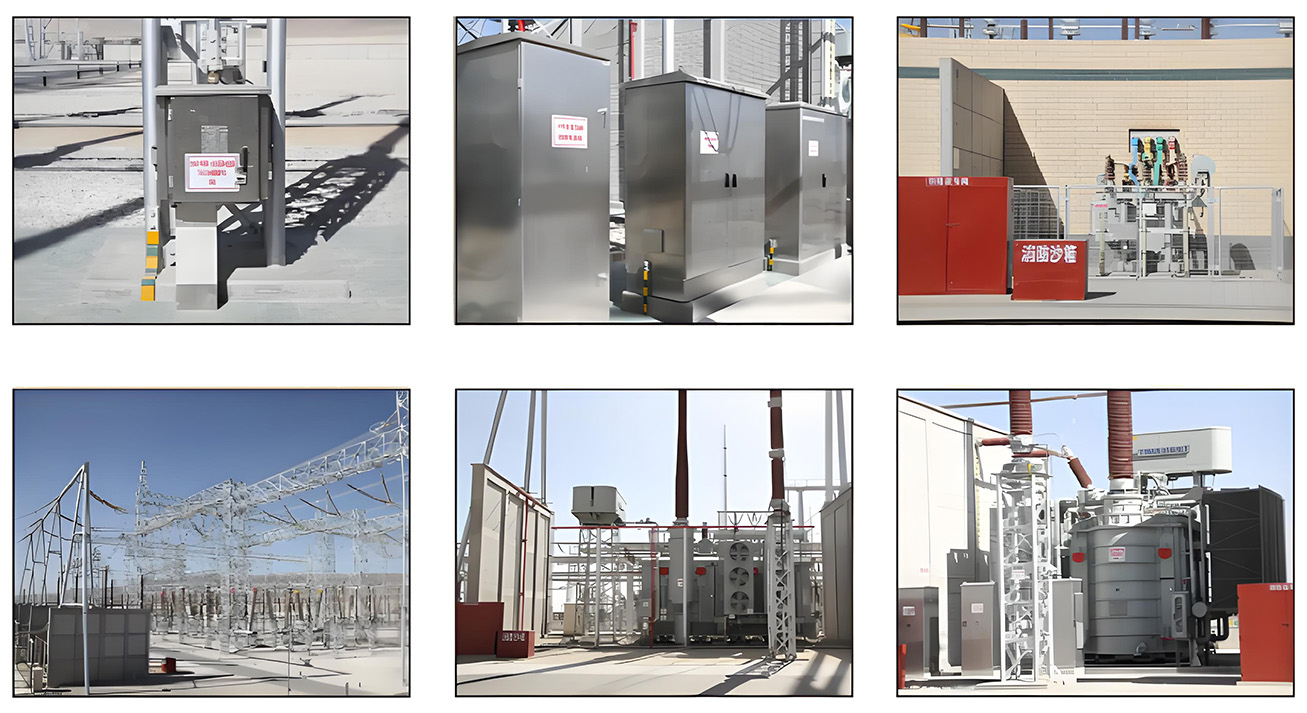
-
CLIENT
Aksu
-
DATE
April 16th ,2025
-
PROJECT TYPE
750KV substation
Aksu 750KV substation new construction project
Aksu 750kV substation is the backbone node of the 750kV power grid around Tarim in southern Xinjiang, serving the construction of the energy hub in the core area of the "Silk Road Economic Belt". The project aims to open up the new energy transmission channel in southern Xinjiang, promote the power consumption of photovoltaic and wind power bases in Aksu area, support the implementation of the third channel (Southern Xinjiang-East China) strategy of "Xinjiang power transmission", and help Xinjiang's energy resource advantages transform into economic advantages.
Engineering Technology Highlights
1. High altitude and windy sand environment adaptability design
(1) Main transformer:
750kV three-phase integrated transformer (capacity 1000MVA), using plateau insulating oil and enhanced heat dissipation system, adapt to the large temperature difference between day and night in Aksu (-30℃~45℃) and the working conditions of 1500 meters above sea level.
Earthquake-resistant design: All station equipment is designed for 9 degrees, hydraulic dampers are installed on the main transformer, and the horizontal displacement limit is ≤5cm.
(2) GIS equipment:
Fully enclosed gas-insulated switchgear (GIS), equipped with double sealing and dust filtration system, dustproof grade IP65, annual leakage rate of gas chamber<0.05%.
Environmental optimization: Use C4/C5 environmentally friendly gases with lower global warming potential (GWP) to replace part of SF6.
2. New energy friendly system integration
(1) Reactive power compensation system:
Configure ±250Mvar STATCOM+ fixed capacitor bank, dynamic response time ≤3ms, to solve the voltage flicker problem caused by photovoltaic output fluctuations.
(2) Energy storage collaborative access:
The station is equipped with 50MW/100MWh electrochemical energy storage to smooth out the fluctuations of new energy and improve the frequency and peak regulation capabilities of the power grid.
3. Intelligent and digital innovation
(1) Digital twin platform:
Build a three-dimensional visualization system based on Beidou positioning + BIM technology, integrating meteorological warning (sandstorm, freezing rain) and equipment health prediction functions.
(2) Unmanned inspection:
Deployment of quadruped inspection robots (adapted to Gobi terrain), automatic inspection corridors by drones, equipped with infrared imaging and partial discharge detection modules.
4. Green construction and ecological protection
Water-saving measures: Adopt dry construction technology, the coverage rate of station area greening drip irrigation system is 100%, and water resource consumption is reduced by 40%.
Ecological restoration: After construction, restore the original poplar forest vegetation, set up windbreak and sand fixation forest belts, and reduce the ecological impact on the edge of the Tarim Basin.
Technical Difficulties and Solutions
1. Extreme climate challenges
Sand-proof design: GIS room adopts positive pressure ventilation + three-stage filtration (PM10 filtration efficiency ≥ 99.9%), and outdoor equipment is sprayed with RTV anti-fouling flash coating.
Low-temperature start: The secondary equipment compartment is kept at a constant temperature and humidity (-40℃ low-temperature start guarantee), and the cable trench is equipped with an electric heating system.
2. High penetration rate of new energy access
Broadband oscillation suppression: Install a subsynchronous damping device (SSDC) to suppress the 2~10Hz subsynchronous oscillation caused by wind power clusters.
Harmonic control: Active power filter (APF) is configured, and the harmonic distortion rate (THD) is controlled to ≤1.5%.
Implementation capabilities and advantages
1. Experience in special environment engineering
The team led the Hami South-Zhengzhou ±800kV UHV project and the Ruoqiang 750kV power transmission and transformation project, and mastered the core technology of substation construction in the Gobi Desert.
2. Technical support for the entire industry chain
(1) Design optimization: Cooperate with Xinjiang Electric Power Design Institute to complete high-altitude insulation correction calculation (IEC 60071-2 standard) and optimize the external insulation configuration of equipment.
(2) Domestic equipment: The core equipment such as the main transformer (TBEA) and GIS (Pinggao Electric) are 100% domestically produced and adapted to the operating characteristics of the southern Xinjiang power grid.
(3) Construction technology:
Application of desert-specific concrete additives (anti-wind erosion strength increased by 50%);
GIS equipment is installed in an inflatable dustproof cabin, and the cleanliness level meets ISO 14644-1 Class 5 standard.
3. National Unity and Frontier Service
During the construction period, local ethnic minority workers will be hired first, and a vocational skills training center will be built;
Reserve 10% capacity interface to support the incremental load demand of Aksu Textile Industrial City and Kuche Petrochemical Park.
Project Value
1. Power transmission capacity: In the long term, it will be expanded to three 750kV outgoing lines, with an annual transmission of more than 18 billion kWh of new energy electricity, which can replace 5.4 million tons of standard coal and reduce carbon dioxide emissions by 14.5 million tons/year.
2. Strategic significance:
Solve the dilemma of "power congestion" in southern Xinjiang's new energy, and increase the utilization rate of transmission channels to more than 90%;
Ensure the power supply of key projects in the China-Pakistan Economic Corridor and strengthen energy security and stability in border areas.
